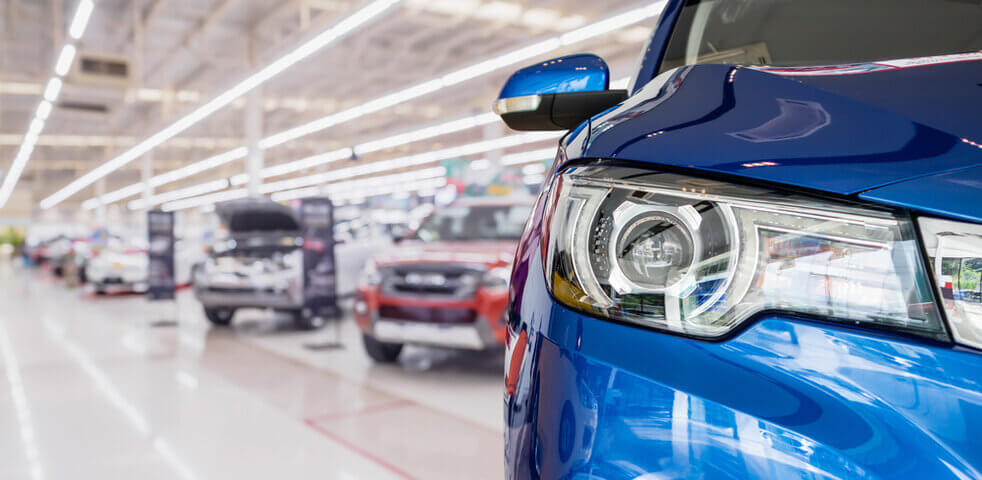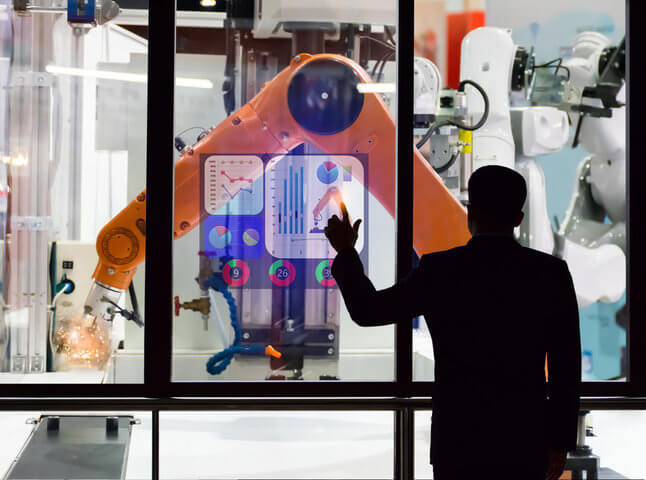Legacy automakers are navigating one of the most disruptive periods in their history, as climate regulations, artificial intelligence, and rapid technological advancements reshape the industry. Stricter emissions policies and the global push for electrification are forcing traditional car manufacturers to rethink their business models, while AI-driven automation and connected vehicle technology are redefining consumer expectations. At the same time, competition from tech-driven newcomers and supply chain uncertainties add further pressure. Our Investment Director, William Lamond, explores the key challenges legacy automakers face in adapting to this evolving landscape and what it means for investors looking at the future of the global automotive sector.
Challenges faced by legacy automakers in a modern world
The legacy automotive companies have been struggling to adapt to the changes enforced on them by central governments, public sentiment, as well as noticeable technology change and development.
This lack of adoption became very noticeable in 2024, when a swathe of earnings revisions were announced, in some cases more than once. Once unthinkable, arch-rivals Honda and Nissan/Mitsubishi announced at the end of the year that they planned to merge. The Japanese industry behemoths were unable to continue to compete by themselves in this new competitive landscape. Despite the merger talks currently being suspended, the unveiling of such a plan highlights the increasing difficulties being faced by automakers.
Profit warnings are common in the automotive industry. Companies have historically struggled with their significant fixed cost bases, unionised labour and heavily leveraged balance sheets. The more recent demands on the industry have certainly led to increased complications and will lead to noticeable changes to its structure over the next few years.
The impact of climate change and sustainability policies
196 nations adopted the Paris Agreement at the United Nations COP21 on climate change meeting in 2015. One of the main focusses of this agreement was the automotive industry and national governments appetites to halt the production of internal combustion engine (ICE) vehicles in favour of hybrid/electric vehicles as well as other alternatives. The adoption of this evolution has been somewhat inconsistent, with the likes of Norway and China embracing the changes with heavy investment in infrastructure, grants, tax rebates and subsidies to enable growth in demand for plug-in hybrid electric vehicles (PHEV) and battery electric (BEV) vehicles. The Western European nations, particularly the ones with demonstrable legacy automotive production have been somewhat slower to adopt the change, with inconsistent policies on infrastructure investment, government subsidies and tax rebates, although continuing to pay lip service to the fight to prevent climate change. Then there is the USA which seems to ping pong between climate change fighter to denier dependent on which party controls the White House and Capitol Hill.
The inconsistent strategy from the developed central governments and slow adoption by the legacy automotives of ICE alternatives has led them to lose market share to new entrants. Stripping out the two demonstrable US BEV companies of Rivian and Tesla and Swedish listed Volvo Car AB (80% owned by the Chinese company Geely Global), the market is predominantly served by the Chinese producers of BYD, Geely, SAIC, et al. These companies have been able to take market share in their domestic market to the detriment of the German, US and Japanese manufacturers who have historically derived significant revenues as well as profitable growth. The Chinese producers are now actively looking to sell their cars internationally aided by the sizeable subsidies the Beijing government has bestowed on them, which has enabled them to keep their prices competitively low vs the legacy producers as well as keep them at the forefront of technology changes. Obviously the recent and future implementation of import tariffs will somewhat even up the playing field in terms of competition in the developed markets but reciprocal tariffs by the Chinese could also further erode the legacy manufacturers revenues.
2025 is also an important milestone in terms of PHEV and BEV adoption in the European Union. Currently the EU is targeting a significant reduction in emissions coming from cars being sold-in so that it will be on course to meet its 100% zero-emissions vehicle sales by 2035. The ICCT (The International Council of Clean Transportation) predicts that the top 10 manufacturers in Europe will have to have 35% of their sales volumes weighted to electric vehicles to meet the 2025 target. This target is currently unrealistic as car manufacturers have reported a noticeable slowing/retracement in demand for electric vehicles (EV). The European car owner has increasingly become sceptical on EV due to:
- ICE variants are cheaper than their PHEV or BEV alternatives in Europe. According to McKinsey, in Germany a sample of 9 models, the BEV variants sold at a premium of anywhere between €1k and €13k, with a mean of £9k.
- Advancement in technology change of EV has led to current EV price devaluation to be considerably higher than ICE vehicles as consumers wait for the advancement of EVs to slow to ensure their resale values are less impacted.
- Lack of infrastructure in national electrical grids have left the general public questioning their ability to recharge their vehicles on a reliable and consistent basis.
- There is a perception in the market that there is a lack of incentivisation schemes in Europe to persuade the consumer to adopt EV.
Under the current scenario the automotive producers in Europe are in an unenviable position as if the EU maintains its targets for emissions, the manufacturers will only have a few options which will all result in profit margins being squeezed:
- Breach the target, which will result in sizeable fines levied on the number of vehicles sold.
- Acquire carbon credits to offset the excess carbon footprint.
- Drop the price of PHEV and BEV vs ICE to stimulate demand.

Innovation through tech and AI advancements
If the above was not enough to disrupt the automotive industry, there is also a significant step change with how companies develop their products as well as brand awareness and customer loyalty. Technological advancement has led the higher end automotives to build increased functionality within their cars, to enhance safety as well as comfort. The legacy automotives have so far been slow to adopt this change and very much relied upon technology companies to develop their functionality and so they are very much beholden to the likes of Qualcomm, Nvidia, Apple and other technology hardware and software companies. Tesla, Rivian and Volvo have bucked this trend and decided to focus their efforts on software and silicon to add a further level of complexity to enhance brand awareness and customer loyalty. They argue that although the car is important, the ability to update a cars functionality through software updates as well as glean significant information about drivers’ habits will enable them to position their companies to benefit from changes within consumer trends. The German automotives have recently started to react to this industry change with them improving their own offerings, even if it is through 3rd parties, but the noticeable investment in Rivian by Volkswagen AG, highlights how the industry will need to adapt.
The global automotive industry is certainly in a state of flux which will probably lead to a noticeable change in its composition over the medium term. It is likely that the developed nations will look to protect their legacy automotive champions from the Chinese entrants. They will inevitably water down the regulatory hurdles to ensure continuity of business. At the moment it is hard to forecast sustainable profitable growth as managements will be forced to react to the heightened competitive landscape, technology change and a more combative global trading environment.
Our investment portfolio exposure in this sector
At Oakglen Wealth, we do not hold any automotive companies on our approved lists but are certainly monitoring the European and North American automotives as there PE multiples are trading at considerable discounts to their historic averages. We continue to remain in awe of Ferrari, which without doubt is the best run automotive company in the world as it deservedly trades on luxury brand multiples due to its consistent profitable growth and ability to ensure demand significantly outstrips supply, whilst utilising a very strong balance sheet, but feel the current share price reflects the attractive investment case to perfection.
Currently we hold exposure to the automotive industry through Infineon, the German listed power semiconductor producer, which is the industry leader. Demand for power semiconductors are expected to demonstrably grow over the medium term as vehicles become more technologically advanced and the adoption of PHEV and BEV will increase the need for more power semiconductors to be used, which should enable the company to grow profitably over the medium term.
If you would like to discuss any of the themes in this article or regarding any aspect of your investments, please reach out to one of our investment team.
_______
Hear more from the Oakglen experts
Our investment team continue to provide interesting and informative content to help keep you in the loop on recent global news and market trends. See below for some key highlights from our team:
Read more:
- H2 2024: Discretionary Investment Management Service Update
Myles Renouf, Senior Investment Manager
- February 2025 Investment Summary
Jeff Brummette, Chief Investment Officer
You can read other articles from the team on our News & Insights page.
Sign up below to receive similar content directly into your inbox.
Want to become an Oakglen client?
Get in touch with one of our wealth team via the Contact Us page to hear more about our products and services, and how suitable they are for you and your personal circumstances.

